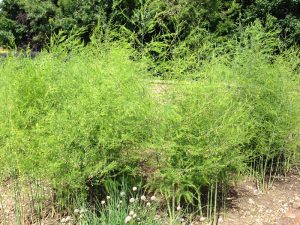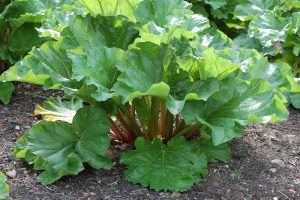Reluctantly, it is time to see the end of this year’s asparagus and rhubarb harvest. Because of their perennial growth habit, asparagus and rhubarb must be given a chance to rebuild food reserves so that a bumper crop can be produced again next year.
A good rule of thumb is to stop harvesting about the middle of June. In the case of asparagus, this allows the spears to produce tall, fern-like growth. Often, asparagus plants will give some indication of when to stop harvesting by sending up mostly spindly spears.
There’s no better time to clean up the asparagus bed than when all spears have been removed, prior to letting the plants grow out for the summer. You can hand-pull or apply shallow cultivation to cut out existing weeds, and then apply a light mulch to discourage new weeds from popping up.
Similarly, it’s time to give rhubarb a chance to renew its food reserves. Of course, if you get a strong urge for rhubarb pie later in summer, it won’t hurt the plant to sneak a few stalks here and there. But keep in mind that the stalks get tougher and stringier as summer progresses. If rhubarb plants are producing blooming stalks, keep them removed to conserve the plant’s resources for foliage and root growth.
The last harvest is also a good time to apply nitrogen fertilizer to both asparagus and rhubarb plantings. Although the harvesting may be over, the foliage will be making the food reserves needed for the plants to come back healthy the following year. Also, many areas received heavy rainfall earlier this spring, washing away many nutrients. Nitrogen is most important to add at this time and can be applied through the use of composted animal manure or commercially prepared fertilizer, such as ammonium nitrate. Apply about 2 inches of dried, well-rotted manure or about one-third pound of ammonium nitrate per 100 square feet of bed followed by gentle irrigation.
Gardeners often wonder whether yellowing foliage should be cut off asparagus in the fall or left over winter. If you’ve had problems with disease or insect pests, it is probably best to remove the foliage to prevent over-wintering sites for these problems. If plants have been healthy, leaving the dead foliage in place will help collect leaves and fallen snow for additional insulation through winter.

